Black Africa and its defense industry. Cognitive dissonance or objective reality?
The Nigerian armored vehicle fleet includes 204 armored vehicles from Turkey; several vehicles were deployed in peacekeeping operations in Liberia
For most outside observers, sub-Saharan Africa (a group of African countries located to the south of the Sahara desert) is hardly a region with a strong defense industry with one well-known exception — South Africa, which created a thriving and highly efficient branch of the economy in the 70s of the past century.
However, like many things in Africa, the situation is changing rapidly, after many years of modest growth, new players are emerging, as the examples of Namibia, Nigeria and Sudan definitely show.
This development is, as a rule, the result of: a political desire to increase self-sufficiency in the field of defense property procurement; increased availability of skilled labor; large defense spending; and the growth of manufacturability and efficiency of the local industrial base.
The largest defense production facilities and companies in sub-Saharan Africa, with the exception of South Africa, are controlled exclusively by the state, but as the example of Nigeria indicates, private business can quickly emerge when conditions permit.
Although South Africa, without a doubt, remains the real leader in the region regarding the defense industry, in the next few years the number of new dynamic companies seeking to compete for a share of the growing regional military equipment market will grow in other parts of the continent.
Nigerian ambitions
Nigeria has become one of two major economic locomotives, competing with South Africa for leadership on the continent. The country is constantly faced with problems of internal security. These include rebels from the Boko Haram group in the northeast, oil piracy, and kidnapping in the Niger Delta, as well as incessant violence in a number of other areas, for example, in the state of Plateau.
The election of President Muhammad Bukhari in 2015 led to new state investments in the defense industry in order to provide the armed forces with the necessary means to combat these security threats. Bukhari also pledged to accelerate development and expand the production potential of the Nigerian defense industry in an attempt to reduce the country's dependence on foreign suppliers and create new professional opportunities for the local workforce.
History Nigeria's defense industry began in 1964 with the creation of Defense Industries Corporation of Nigeria (DICON). With the technical support of the West German company Fritz Werner, DICON built weapons Kaduna factory for licensed production of Beretta BM-59 rifles and M12S assault rifles, as well as millions of cartridges of 7,62x51 mm and 9x19 mm.
The three-year civil war, which went on in the 1967-1970 years, was the impetus for the increase in the production of weapons and ammunition for the federal army. In subsequent years, DICON continued the production of weapons, but in the 90-e years due to budgetary difficulties there was a drop in production volumes.
Currently, DICON has focused on the production of small arms and ammunition. The FN FAL model is still being produced in the country, known as NR1, the OBJ-006 submachine gun (clone AK-47), the Beretta M12 SMG submachine gun, the Browning GP35 pistol under the local designation NP1, the light FN MAG machine gun, RPG-7, 81-mm mortars and hand grenades, as well as Nato and 7,62 mm Parabellum cartridges.
The 7,62x39 mm chucks factory is due to open soon; machine equipment for it was supplied by Chinese company Poly Technologies. In the near future, DICON is also ready to begin manufacturing the Beryl M762 assault rifle after it signed the March 2018 agreement with the Polish company PGZ.
In 1979, Nigeria signed an agreement with the Austrian Steyr Daimler Puch for the construction of a Pinzgauer light vehicle plant, as well as Steyr 4K 7FA armored personnel carriers. The exact production volumes of this Special Vehicles Plant plant remain unknown.
Currently, the plant is used by the Nigerian army as a service center for armored vehicles. The Army Corps of Engineers also used this enterprise for the development and production of the Igiri BTR, which was introduced in 2012; but its characteristics were unsatisfactory and production was discontinued.
Currently, the Corps of Engineers produces an IPV-type lightweight reconnaissance platform with a tubular frame, which began to enter the army in 2017.
The crew of the IPV machine is three people, the driver and two arrows, one sits to the left of the driver for a light machine gun, and the second is placed behind and manages a large-caliber machine gun on a turret machine. This year, the army ordered an additional IPN 25 vehicles.
Flourishing business
Private companies are quickly finding their niche in the booming Nigerian defense industry. Among them, perhaps the most dynamic is the company Proforce, which develops and manufactures armored vehicles and personal protective equipment for the police and military. Its main production is located in the states of Ogun and Rivers.
Founded in 2008, Proforce originally specialized in the production of collection vehicles and the reservation of civilian vehicles for commercial customers. After the start of work on booking Toyota pickups for law enforcement, the company ultimately decided to develop an APC in response to police needs, taking the Toyota Land Cruiser chassis as the base.
The project under the designation PF2 was completed in 2012 year and since then has been refined several times. As the representative of Proforce noted, the choice of the Land Cruiser chassis was motivated by its low cost and the wide availability of spare parts throughout Nigeria.
“After several tests and improvements, PF2 entered other states, where he took part in security tasks. Its unique design is perfect for Nigerian roads, unlike the larger armored Land Cruiser, imported from abroad, which cannot pass through narrow roads in some parts of the country. ”
PF2 weighing tons of 4,2 is based on the Toyota Land Cruiser 79 chassis, the armored hull offers all-round protection against 7,62xXNNXX mm bullets corresponding to the B51 level. The car can accommodate up to seven people in addition to the driver, it can be equipped with a protected combat module for a light machine gun.
The PF2 was also the first international success of Proforce when, in 2015, six cars were sold to Rwanda. They were purchased by police in the Central African Republic for the UN peacekeeping mission.
According to Proforce, Rwandans were very pleased with the machines, signing an agreement with the company for technical support for PF2 and upgrading ten armored Land Cruiser received from another supplier.
Relations between Proforce and Rwanda are growing stronger and therefore it is planned to establish a branch there. Although the car PF2 has not yet been acquired by the Nigerian military, the manufacturer offers it to other African countries, as well as police agencies. The company very much hopes for the export opportunities of its products, opening in this connection representative offices in Ghana and the UAE.
Ugandan contingent in Somalia received Bastion armored vehicles manufactured by Mack Defense
Force to be reckoned with
At the end of 2016, in close collaboration with the Nigerian army, work began on a more ambitious project to develop an MRAP-type machine (with enhanced mine and improvised explosive devices), known as ARA or Thunder. The idea was to offer the military a cost-effective solution in order to save valuable foreign currency by refusing to import more expensive platforms.
Proforce created the first prototype based on the Tatra 2.30 TRK 4x4 truck. Upon completion of the development, the prototype MRAP passed extensive tests in the Nigerian army, including the operational area in the northeast of the country, stuffed with rebels.
Following these field tests, the army requested some improvements and refinements to the ARA prototype. The most notable of them are: an increase in ground clearance, the replacement of individual windshields with a solid armored windshield to improve visibility and the installation of a new communication system from an unnamed supplier. After completions, an order was received for 8 of such machines and all of them are currently delivered.
The ARA armored vehicle has a total mass of 19 tons, it is equipped with a Cummins diesel engine with an 370 horsepower, coupled with an Allison transmission; it hosts up to 12 people, including the driver and the shooter. The vehicle is armored in accordance with the STANAG Level 4 standard and can be equipped with lattice screens to protect against RPGs.
Although Proforce offers the current version of ARA to other countries, a more advanced version with a one-volume body is currently being manufactured, since the Nigerian army wanted to have such a configuration. The company expects additional orders for this new version.
In addition to the ARA and PF2 armored cars, Proforce also sold the modified Hilux pickups to the Nigerian military, which it converted into light armored personnel carriers by installing a secure compartment on the rear platform, which has protection level B6 + and several loopholes for firing. Several vehicles were supplied to the army and the air force, which use them in internal security tasks.
Proforce is also ready to start manufacturing wearable protection and bulletproof helmets in its new factory. In addition, the company is looking for foreign partners, as evidenced by the delegation of the French company Nexter, who visited the plant in 2017 year with a discussion of possible industrial cooperation with DICON.
Innoson Vehicles Manufacturing, a large Nigerian automaker, also expressed interest in the manufacture of armored platforms, after several of its Chinese-made cars showed themselves well in the Nigerian army. In this regard, the company would like to establish closer ties with DICON.
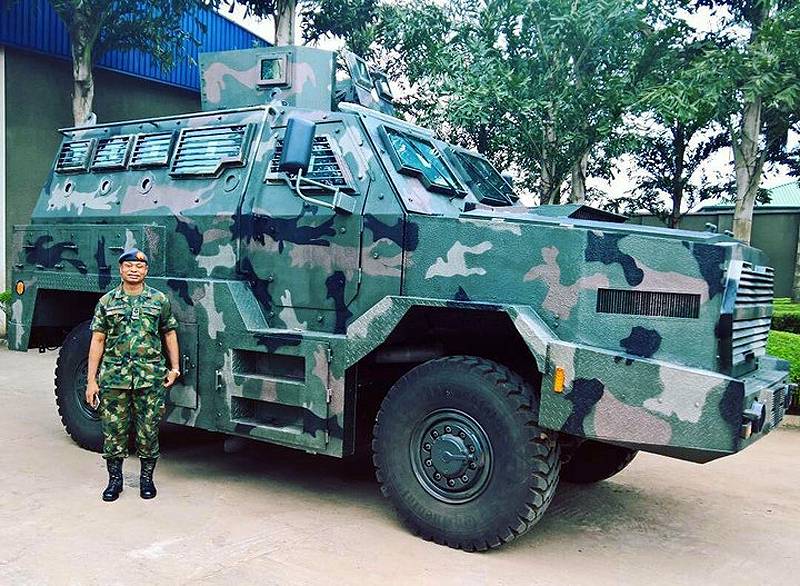
Proforce worked closely with the Nigerian army to develop an ARA or Thunder MRAP machine.
Innovation and exaggeration
Faced with the EU and UN arms embargo, Sudan turned to China, Iran and Russia as the main arms suppliers. The country is also engaged in the development of its own production facilities with the aim of increasing the level of self-sufficiency in the defense sphere. Khartoum’s first attempt to establish military property production dates back to 1959 the year when the first ammunition workshop was established. In 1993, the Military Industry Corporation (MIC) was formed to consolidate and expand the local defense industry.
Accurately understanding the capabilities of MIC is quite challenging due to the scarcity of available sources. Here are some of the country's famous manufacturing sites: the Al Shaggara Industrial Complex, which produces small arms ammunition; Yarmouk Industrial Complex, which reportedly produces large-caliber ammunition, missiles, artillery systems and machine guns; Elshaheed Ibrahim Shams el Deen Complex for Heavy Industries, which manufactures, maintains and upgrades armored vehicles; and Safat Aviation Complex.
Although MIC has significant industrial capacity, licensed production and maintenance is likely to be the basis of its operations. However, the corporation has some R & D capabilities, as evidenced by the products presented by the company at the last two IDEX exhibitions in Abu Dhabi.
First of all, it is a Khalifa-1 self-propelled howitzer, which is a 122-mm D-30 gun with a digital Kagaga local development fire control system, mounted on the chassis of a KamAZ 43118 6X6 truck, equipped with a four-door protected cabin. According to the MIC, the Khalifa-1 howitzer has a maximum range of 17 km. The total mass of the system is 20,5 tons with the calculation of five people and 45 122-mm rounds of ammunition. In addition, it only takes 90 seconds to take up a position and produce the first shot.
The Khalifa-2 howitzer shown at IDEX 2017 is identical to the Khalifa-1 except for the Ural 4320 6xXNNXX chassis.
MIC Corporation offers to export another of its own proprietary platform - the Sarsar family of armored personnel carriers. All three cars in this family are based on the chassis of light trucks (SUVs), the Sarsar-2 model is based on the KIA KM 450, and the Sarsar on the Toyota Land Cruiser. Each platform accommodates a driver, an arrow and six passengers.
A secure weapon module can be armed with a machine gun. The total weight of all three options is within 5-5,5 tons. A number of other projects offered by MIC seem to be products of either local assembly or rebranding of platforms of Iranian origin. For example, the Khatim tracked armored vehicle is essentially a copy of the Iranian Boraq, which in turn is a modification of the Russian BMP-1.
The Chinese car corporation MIC also either collects, or for marketing purposes without any modifications gives out for their own. This is what happens with the Shareef-2 armored vehicle, which is actually a Type 05P infantry fighting vehicle. Furthermore, although Sudan claims to be able to produce Tanksmost likely he simply has the capacity to modernize and overhaul this type of machine.
But it seems that these statements are somewhat unfounded, because, although MIC does issue an Al-Bashir tank for its own product, the latter is in fact a Chinese Type 85-IIM tank. In addition, Khartoum’s decision to buy T-2016 tanks from Russia in 72 also confirms that tank production in Sudan does not exist and, at best, everything is limited to assembling vehicle sets.
The production of small arms and ammunition is the main activity of MIC, along with the maintenance and modernization of military equipment and artillery, for which a large number of foreign specialists have been invited. The following weapons are produced at local enterprises: automatic rifles of the AK family; pistols; Terab assault rifles, which are a local copy of the Chinese CQ, which is also a copy of the American M16; and Tihraga SMG, which is a clone of H&K MP5, most likely produced on Iranian equipment.
In addition, a 12,7-mm Khawad heavy machine gun, which is a licensed version of the Chinese Tour 89, and Abba, the local version of the 35 mm QLZ-87 grenade launcher, are being manufactured. Mortars of 60, 82 and 120 mm caliber are also produced along with copies of the RPG-7 and 73 mm recoilless Soba guns very similar to the SPG-9 model. A wide range of ammunition for small arms is being produced, including 7,62x39 mm cartridges, mortar rounds, 107 mm missiles and even aviation Bombs.
Confirmed overseas buyers for MIC products include the Democratic Republic of the Congo, Djibouti, Mozambique and Somalia. Sudan reportedly supplied MIC weapons to non-state actors in Côte d'Ivoire and South Sudan.
For the manufacture of the Nyoka BTR in Uganda, modified hulls from Mamba armored vehicles and Mercedes-Benz engines are used.
Get into a fight
The defense industry of Namibia, although it cannot boast of production volumes, has counted more than a dozen since the time when the civil confrontation with SWAPO - the Organization of Peoples of South-West Africa was going on. In the 80s, MRAP Wolf and Wolf Turbo were very similar to the South African Casspir machine in the country.
Wolf Turbo machines were used by the Namibian army in hostilities in the Democratic Republic of the Congo in the 90s, with several vehicles delivered to this country. The design was subsequently refined, turning into a version of the Wer'Wolf Mk 1, which was produced by the Namibian company Windhoeker Maschinenfabriks (WMF).
The new machine was taken to supply the Namibian army and, ultimately, was deployed in the DRC. By the end of the 90-x, an improved version of the Wer'Wolf Mk 2 appeared, which was also later acquired by the Namibian army. Several export contracts were concluded, mainly with Angola, but the exact number of platforms purchased is unknown.
In addition to the standard version of the armored personnel carrier, a fire support option was developed. The vehicle was armed with a 73 mm 2A28 cannon in a turret similar to that of the Russian BMP-1. WMF's newest platform has been designated the Mk 3. This lighter MRAP vehicle based on the Iveco 4x4 truck chassis was presented at Africa Aerospace & Defense (AAD) in 2014.
The machine, presented at this exhibition, was in the version of the transporter personnel. It can accommodate 8 people, the level of all-round protection corresponds to the STANAG 4569 Level 1, which can be raised to Level 2. The gross weight of the machine is 14 tons. Subsequently, the platform, most likely, was being finalized and it was possible that the base chassis changed. However, there is no information about the current state of the project and about the orders of the platform by the Namibian army or foreign military.
Faced with the arms embargo in the 60 and 70, Rhodesia (now Zimbabwe) had to quickly and from scratch create a defense industry in order to compensate for the lack of imported weapons. In addition, due to the peculiarities of the internal conflict, in which land mines were used on a large scale, development and production of a completely new technology was required.
Actually, in connection with this, Rhodesia became the birthplace of MRAP category cars, when V-shaped hulls and armored cabs were installed on commercial chassis.
After the adoption of independence, Zimbabwe Defense Industries (ZDI) was founded to continue the production of military equipment and weapons in Zimbabwe. The company mainly focused on the production of small arms, as well as mortar and artillery shells. The production of armored platforms also continues, mainly Mine-protected Combat Vehicle (MPCV), which is a combination of armored capsules and the chassis of the Mercedes Unimog, which is also a Rhodesian mined machine.
A number of MPCVs are still in use in the Zimbabwe army, for example, they took part in the overthrow of Robert Mugabe in 2017. Although the company ZDI in 80-e and 90-e years of the last century flourished, exporting a significant amount of ammunition. economic depression and international sanctions, in the end, adversely affected the company and its capabilities.
In 2015, the then director of the company confirmed that all production was stopped. However, in 2018, he said that measures were being taken to revive the company ZDI.
In 2015, the US government bought 62 vehicles from Mack Defense, which were then shipped to Cameroon, Ethiopia, Somalia, Tunisia and Uganda
New companies
In Uganda, Luwero Industries, part of the national corporation National Enterprise Corporation, manufactures small arms ammunition. The Ugandan police also have their own workshops in which Nyoka MRAP armored vehicles are manufactured in collaboration with local firm Impala Services and Logistics. The Nyoka armored vehicle, first shown in the 2014 year, is actually a modified and modernized Mamba armored personnel carrier, which the Ugandan army bought several dozen pieces in the 90s.
Kenya Ordnance Factory Corporation (KOFC) remained the only defense company in the country after the unsuccessful attempt of the British firm Osprea Logistics to organize production of Mamba Mk 2012 armored personnel carriers in 5 in the year. The state-owned company KOFC produces only ammunition for small arms (7,62 mm NATO. 5,56 mm and 9 mm Parabellum).
With the support of Metal and Engineering Corporation (METEC), Ethiopia built a large industrial complex. Ethiopian industry is known for its service and technical support capabilities for military equipment.
Bishoftu Automotive Industry, one of the companies in METES, owns repair and overhaul workshops that service the armored vehicles of the Ethiopian army, including T-72 tanks, WZ-551 and BRDM-2 tanks. The company also assembled 75 BTR Thunder Mk 1, supplied in the form of vehicle kits by Israeli company GAIA Automotive Industries in 2011-2013.
Homicho Ammunition Engineering Industry, another METES company, manufactures small arms ammunition, mortar and artillery shells, rockets and aerial bombs. The company Gafat Armament Engineering Industry produces under license AK-47 and AK-103, known under the local designation Gafat-1 and ET-97 / 1.
In addition, Gafat Armament Engineering Industry produces: the ET-97 / 2 model, which the company describes as an 40-mm grenade launcher; 35-mm automatic grenade launcher ET-04 / 01, which may be the licensed version of the Chinese grenade launcher QLZ-04; 82-mm mortar ET-05 / 01 and 12,7-mm machine gun ET-05 / 02. In addition to meeting the needs of the Ethiopian military and police, METES exports some of its products, mainly small arms ammunition, to other African countries, including South Sudan and Sudan.
While the sub-Saharan defense industry still needs to go a long way to compete on equal terms with European and American companies, examples from the Nigerian company Proforce show that private initiative combined with effective government can be a successful business.
The victories of the Namibian company WMF in overseas markets with its Wer'Wolf family is another example of how African defense companies that do not have such influence as large South African firms can still succeed in the international arena. As African governments increasingly seek self-sufficiency in defense procurement, new and vigorous local players should be expected.
On the materials of the sites:
www.nationaldefensemagazine.org
dicon.gov.ng
www.nexter-group.fr
proforcedefence.com
mic.sd
www.wmf.com.na
www.epicos.com
www.metec.gov.et
pinterest.com
www.dvidshub.net
www.nairaland.com
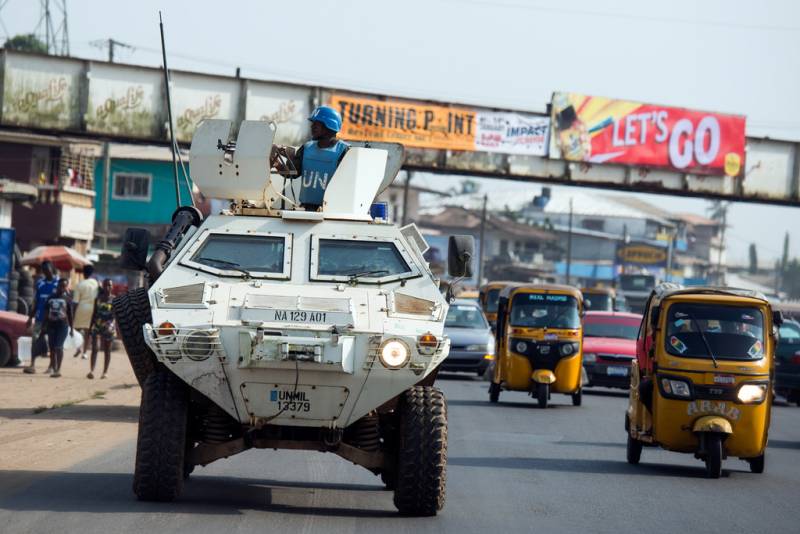
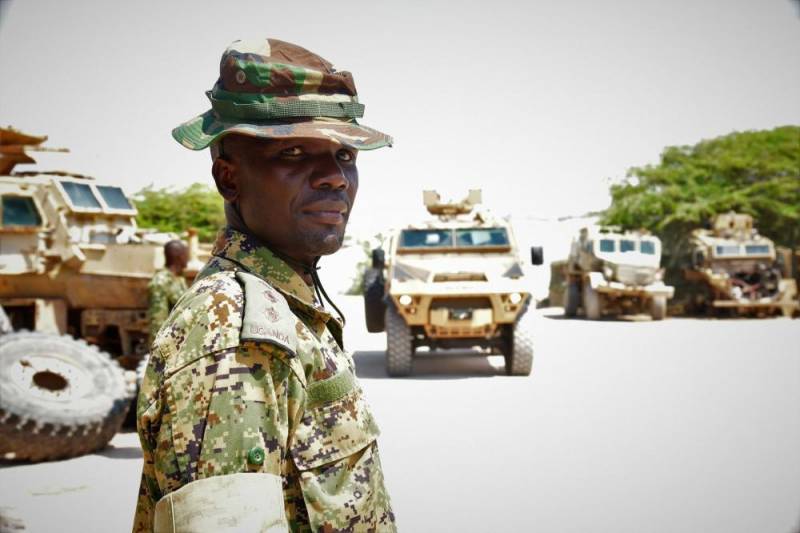
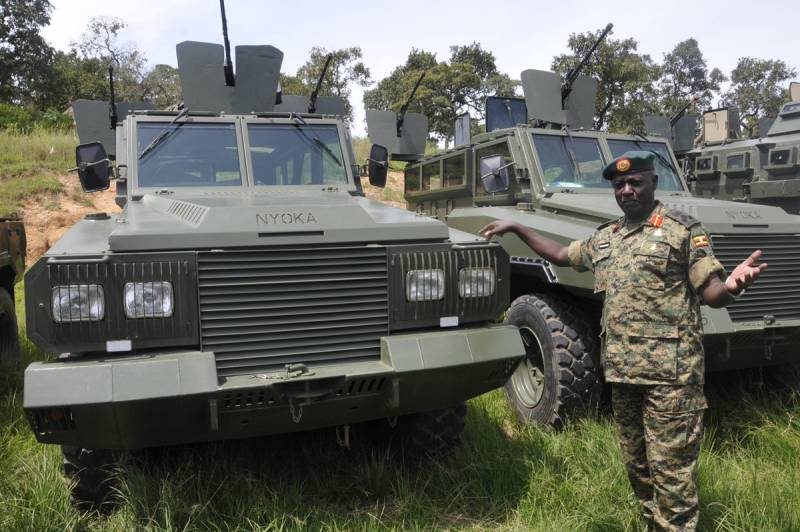
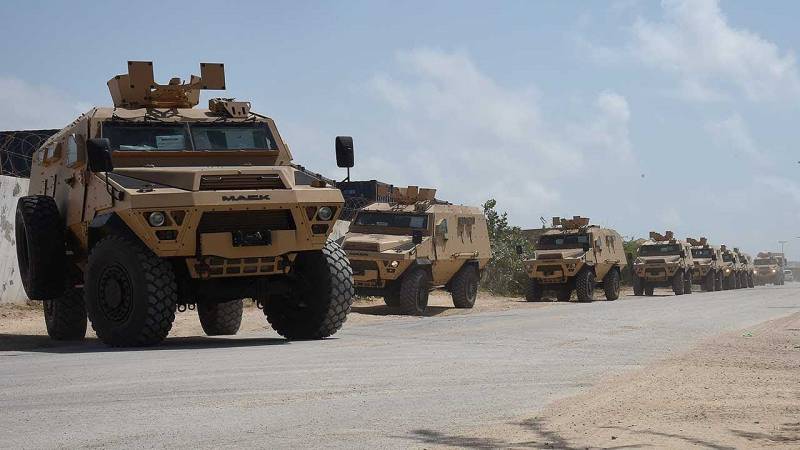
Information